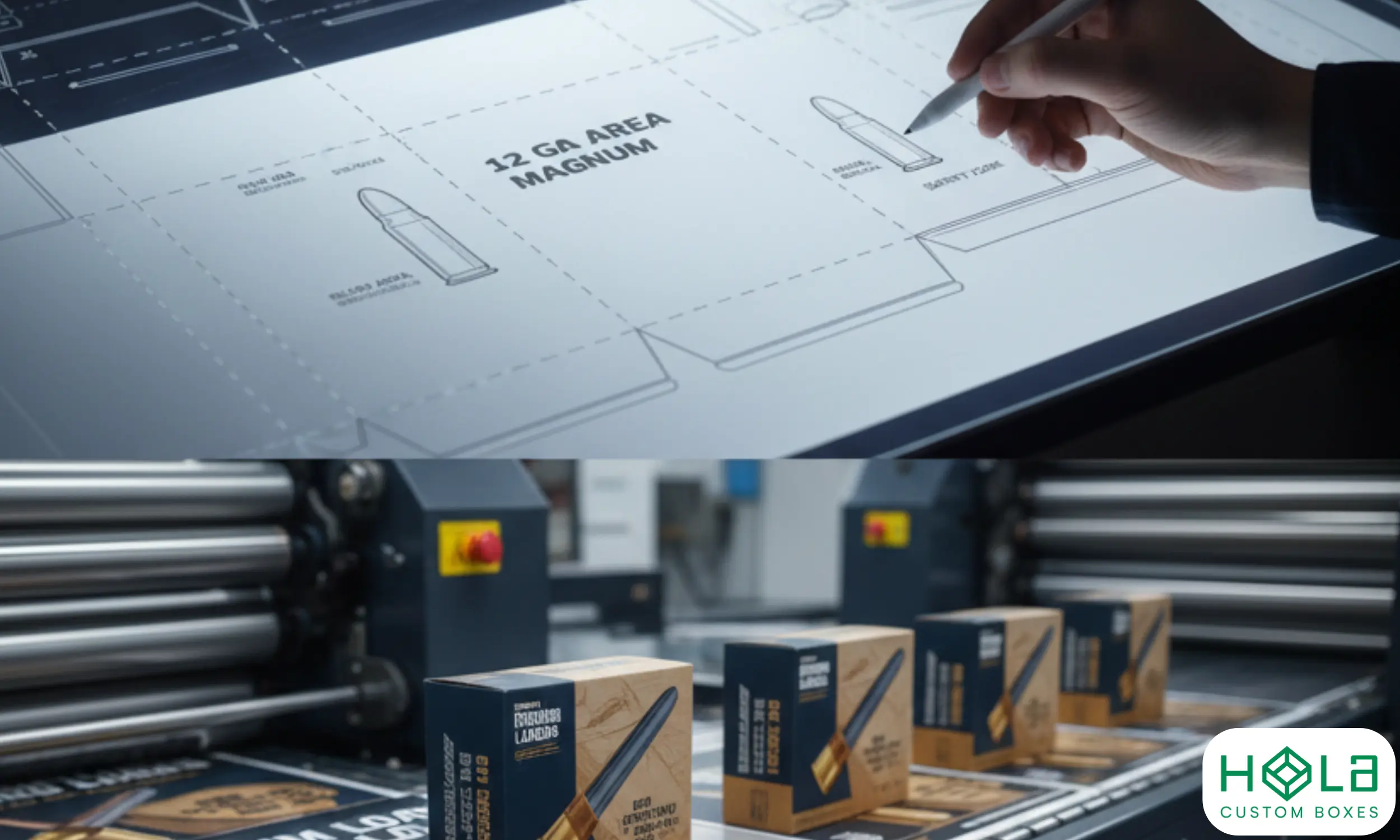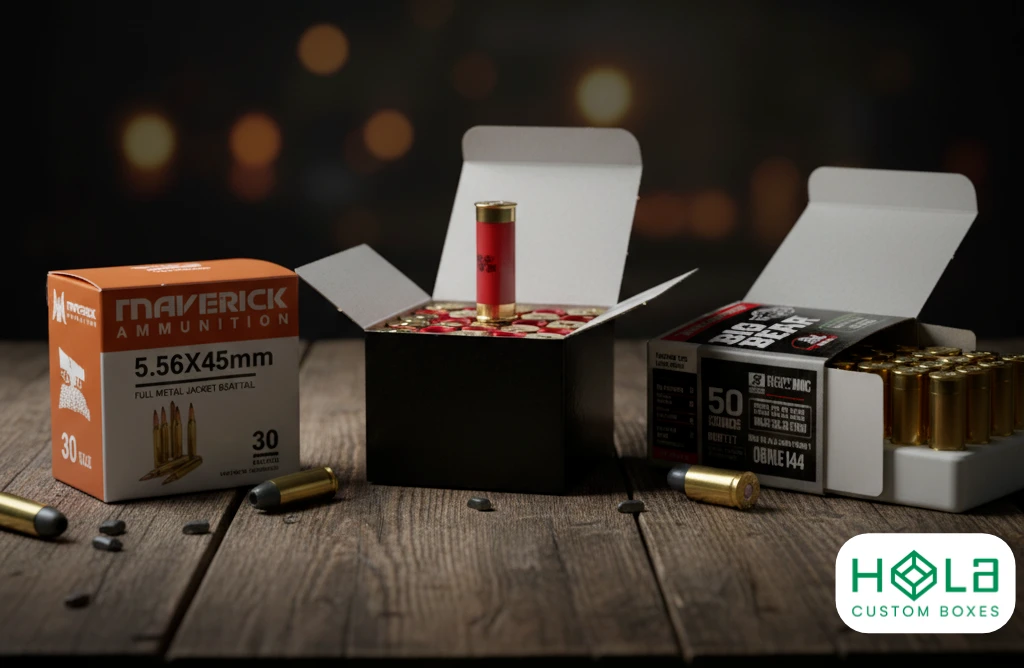From Die-Line to Dealer Shelf: Mastering Custom Printing on Cardboard Ammunition Packaging
2025-10-01 10:36:43
From Die-Line to Dealer Shelf: Mastering Custom Printing on Cardboard Ammunition Packaging
Custom cardboard ammunition packaging is more than just a container; it's a critical marketing tool, a brand ambassador, and the first thing a customer sees. While the structural integrity of the box is vital for protecting your rounds, the quality of the printing is what sells them. Mastering the printing process, from the initial die-line to the final product on the dealer shelf, can transform a generic carton into a compelling, professional package.
The Die-Line for Custom Bullet Packaging
The journey of exceptional custom printing always begins with the die-line. A die-line is the flattened, two-dimensional template that represents the final, three-dimensional structure of your box. It’s the essential blueprint that guides both the cutting/creasing equipment and the graphic design.
Why the Die-Line is Your Printing Foundation
Precision and Placement: The die-line defines exactly where the folds and cuts will occur. If your artwork isn't precisely aligned to the die-line, your logo might be creased, or your critical product information could wrap around a corner and become unreadable. Your designer must work within the provided die-line template to ensure perfect registration.
The Bleed Area: Every professional printing project requires a "bleed." This is an extra margin of print area that extends beyond the final cut line. When designing your bullet packaging, any background color or image that is meant to go to the edge of the box must extend into the bleed area. This prevents unsightly, thin white lines from appearing if the cutting machine shifts slightly during production.
Safety Zones: Conversely, you must keep all vital text (like caliber, grain weight, or warnings) and logos within the safety zone—an area inside the cut lines. This guarantees that no essential information is accidentally trimmed off.
Working closely with your packaging supplier to confirm the die-line for your specific caliber and count is the non-negotiable first step. Don't print a single proof until the die-line is 100% approved.
Paper Ammo Boxes and Material Considerations

The type of cardboard or paper stock you choose directly impacts how your graphics and colors will appear. The printing process for paper ammo boxes is highly sensitive to the surface characteristics of the material.
Key Material Factors Affecting Print Quality:
Stock Thickness (Caliper): Ammunition packaging typically uses a heavier stock, such as 18pt to 24pt Solid Bleached Sulfate (SBS) board, for durability. Thicker stock generally offers a smoother surface, which results in better ink holdout and sharper images.
Coating (Finish): This is the most crucial print factor.
Uncoated Stock: Has a porous, matte finish. Ink tends to soak in, resulting in colors that look slightly duller or softer. This finish gives a more rustic, classic look often suitable for traditional brands.
Coated Stock (Gloss or Matte): The preferred choice for most modern packaging. The coating keeps the ink sitting on the surface, making colors vibrant, images crisp, and fine text highly legible. A gloss coat enhances color depth, while a matte coat reduces glare while still providing excellent print clarity.
Color of the Substrate: While most high-quality custom cardboard ammunition packaging is made from white SBS board, if you opt for a recycled or natural kraft board, be aware that the brown or grey substrate will affect the perception of your ink colors. For example, printing yellow ink on brown cardboard will yield a muted, mustard-like tone unless you use a white ink base layer.
Printing Techniques for Shotgun Shell Boxes Cardboard
Different printing methods offer various pros and cons in terms of cost, color fidelity, and volume. For high-quality, high-volume production of shotgun shell boxes cardboard and other ammo packaging, two techniques dominate:
1. Offset Lithography (Litho-Printing)
How it Works: The image is transferred from a metal plate to a rubber blanket, and then rolled onto the cardboard. This is the industry standard for high-volume, premium packaging.
Pros: Exceptional image quality, perfect color consistency, ability to use Pantone Matching System (PMS) spot colors for guaranteed brand fidelity, and the most cost-effective solution for large runs (over 5,000 units).
Best For: Detailed, high-resolution graphics, photographs of the product, or packaging that requires precise brand colors (e.g., matching a specific logo red or blue).
2. Digital Printing
How it Works: Similar to an office printer, but industrial scale. It prints the image directly onto the cardboard.
Pros: Excellent for low-volume runs (prototyping, seasonal specials, or less than 1,000 units), fast turnaround times, and the ability to easily change graphics between batches (variable data printing).
Best For: Startups, testing new designs, limited-edition runs, or when time is the most critical factor. The quality is improving rapidly, but it can still be more expensive per unit for large orders.
The Role of Spot Colors (PMS)
While most packaging is printed using the four-color process (CMYK: Cyan, Magenta, Yellow, Black), using a Pantone Matching System (PMS) spot color is essential for any brand that demands color accuracy. A PMS color is a pre-mixed ink, guaranteeing that your logo's color will be identical whether it's printed today, next year, or on a different continent. This is critical for brand recognition and trust.
Coatings, Embellishments, and Quality Control
Once the ink is applied to your custom cardboard ammunition packaging, it's time for the final details that protect the print and enhance its appeal.
Essential Post-Print Processes:
Varnish or Aqueous Coating: A clear liquid applied over the printed surface to seal the ink, protect against scuffs and moisture, and enhance the finish. A High-Gloss UV coating is often used on premium ammo boxes to make the colors pop and resist friction during shipping.
Lamination: A thin film of plastic (gloss or matte) is bonded to the cardboard surface. This offers superior protection and durability, crucial for heavy bullet packaging that will endure handling in a retail environment.
Specialty Embellishments: To truly stand out on the dealer shelf, consider:
Foil Stamping: Applying a metallic (gold, silver, etc.) or colored foil to specific areas for a premium look.
Embossing/Debossing: Raising (embossing) or recessing (debossing) an area of the box, such as the company logo, to give it a tactile, three-dimensional feel.
Quality Control Before Mass Production
Never skip the physical proof. Before the entire run of paper ammo boxes is printed, you must receive a finalized, cut-and-folded sample. This proof allows you to verify three critical elements:
Color Match: Does the print color match your approved digital files and brand standards?
Registration: Are the graphics perfectly aligned with the die-line cuts and folds?
Structural Integrity: Does the box fold correctly, hold the weight of the rounds, and function as intended?
By meticulously managing the process from the initial die-line concept through the final coatings, you ensure that your custom cardboard ammunition packaging doesn't just hold your product—it sells it, reinforcing your brand's commitment to quality from the round to the box it ships in.
Ready to turn your precision-crafted ammunition into a retail powerhouse? Stop settling for off-the-shelf solutions that hide your quality. Our team doesn't just print boxes; we provide the die-line expertise, material consultation, and color fidelity needed to elevate your brand from the manufacturing floor straight to the dealer shelf. Contact us today to start designing the packaging that truly reflects your rounds' performance.
